
|
Home | Group members | Documentation | Publications | External Links |

|
|
These are Simon Hodgkin's pipeline diagrams.
 WFCAM pipeline diagram
JPEG,
PNG,
PS,
EPSI,
TIFF and
VISIO versions.
WFCAM pipeline diagram
JPEG,
PNG,
PS,
EPSI,
TIFF and
VISIO versions.
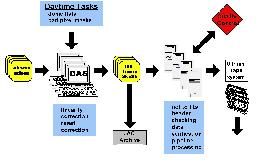 WFCAM summit pipeline diagram
JPEG,
PNG,
PS,
EPSI and
VISIO versions.
WFCAM summit pipeline diagram
JPEG,
PNG,
PS,
EPSI and
VISIO versions.
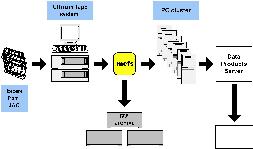 Cambridge hardware systems
JPEG,
PNG,
PS,
EPSI and
VISIO versions.
Cambridge hardware systems
JPEG,
PNG,
PS,
EPSI and
VISIO versions.
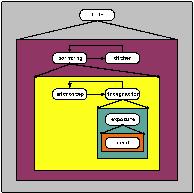 The elements for each target within an MSB. Each component is an
optional iteration
of a sequence of observations. Thus at the lowest level, an exposure
is made up of a sequence of reads. Exposures can be looped over to
build up an integration. Microstepping over integrations for interleaving
will increase the size of the data frame by 2x2 or 3x3. Interleaving
microsteps also include an integral pixel shift (eg. step n+0.5 pixels)
so the data can be combined to create flatfields. This forms a pointing.
Dithering around pointings can be used to remove bad pixels. Four
pointings can be combined together to form a tile. For shallow survey tiles with
a 2x2 microstep each detector pixel would see 16 different bits of sky.
Offsets to other targets, or for sky estimation, are not included for clarity.
A postscript version of this plot is also
available.
The elements for each target within an MSB. Each component is an
optional iteration
of a sequence of observations. Thus at the lowest level, an exposure
is made up of a sequence of reads. Exposures can be looped over to
build up an integration. Microstepping over integrations for interleaving
will increase the size of the data frame by 2x2 or 3x3. Interleaving
microsteps also include an integral pixel shift (eg. step n+0.5 pixels)
so the data can be combined to create flatfields. This forms a pointing.
Dithering around pointings can be used to remove bad pixels. Four
pointings can be combined together to form a tile. For shallow survey tiles with
a 2x2 microstep each detector pixel would see 16 different bits of sky.
Offsets to other targets, or for sky estimation, are not included for clarity.
A postscript version of this plot is also
available.
The following examples illustrate how one might construct Minimum Schedulable Blocks using the iterator function described above. These examples are 'use cases' based on the UKIDSS surveys.
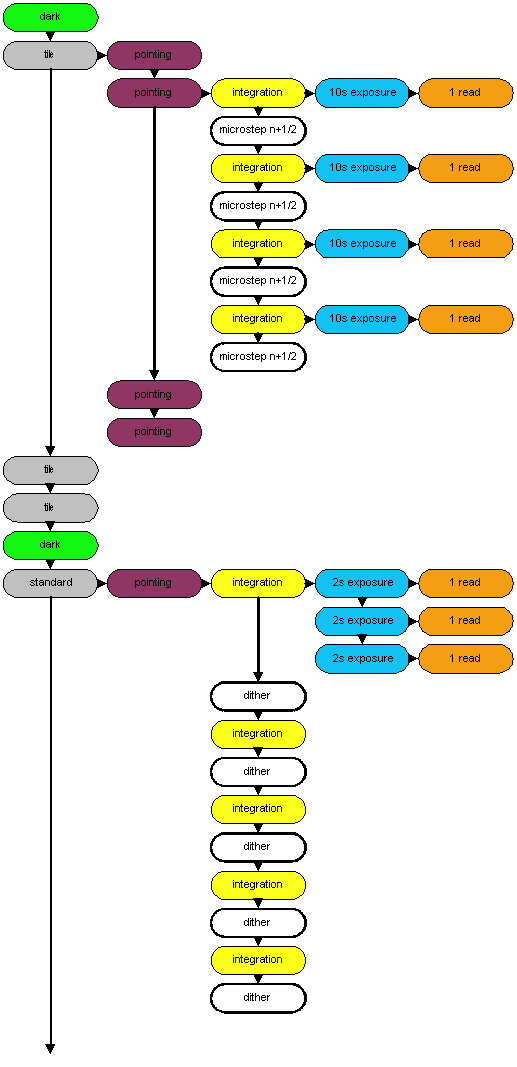 LAS MSB |
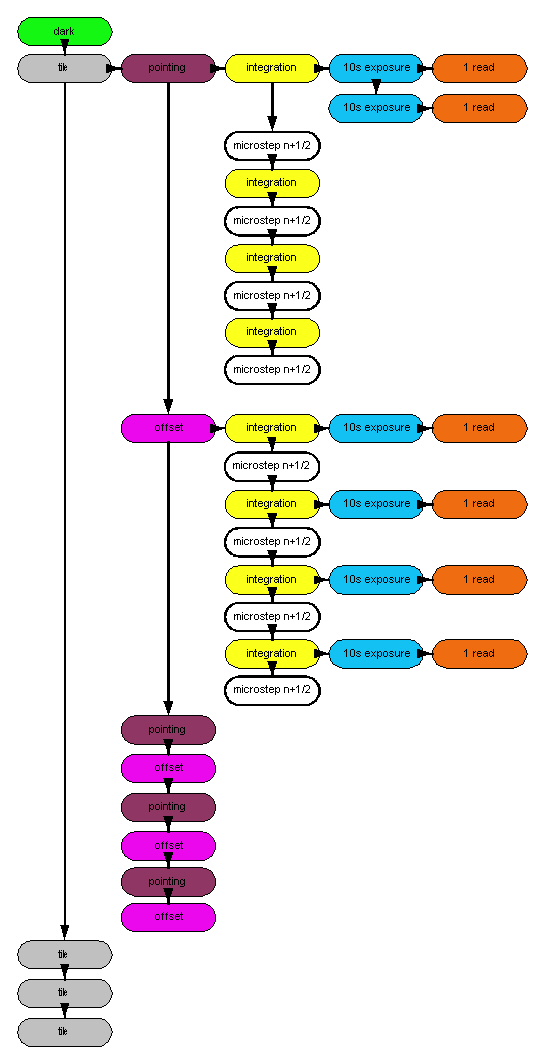 GPS MSB |
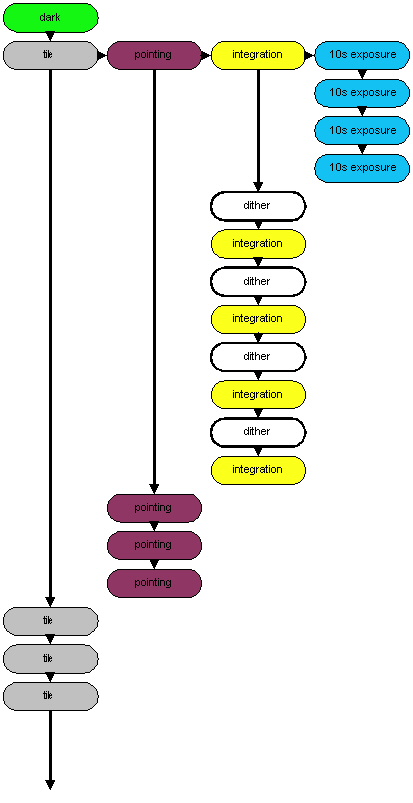 UDS MSB |
 WFCAM summit pipeline diagram
JPEG,
PNG,
PS,
EPSI,
TIFF and
VISIO versions.
WFCAM summit pipeline diagram
JPEG,
PNG,
PS,
EPSI,
TIFF and
VISIO versions.